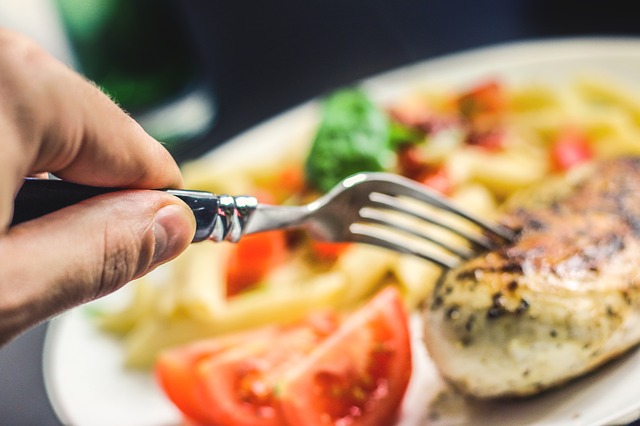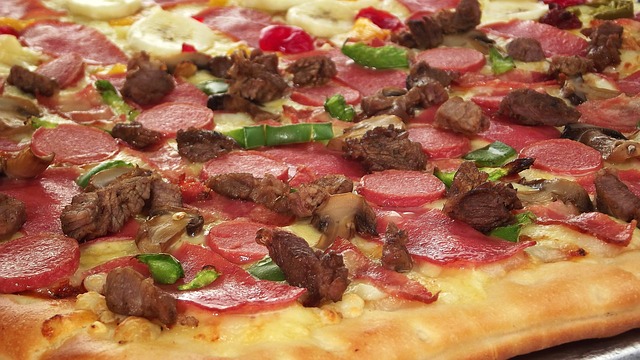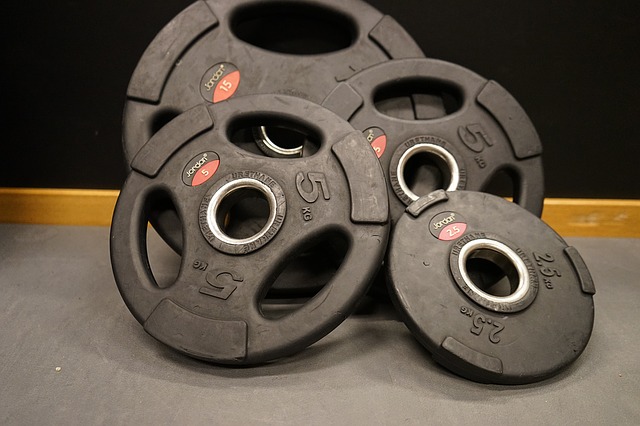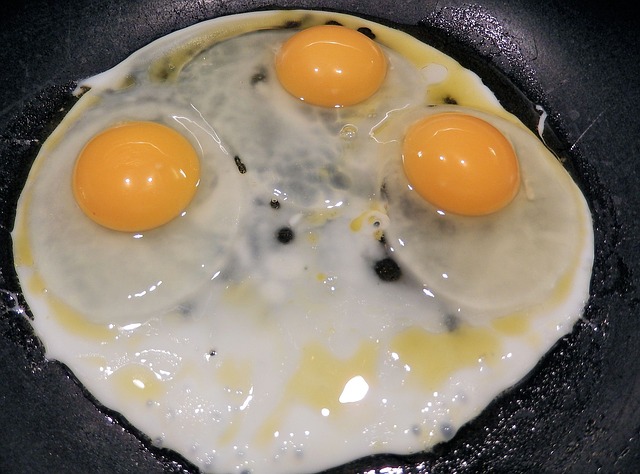Here’s the problem with most diets: They’re diets. Diets are sets of rules. Diets are things you follow. So what happens? You try the latest trendy diet, you try to stay within its boundaries, and eventually you get sick of it.
A better way to eat healthy over the long-term — and to lose weight, if losing weight is your goal — is to stop thinking in terms of diet and start thinking in terms of lifestyle.
Not that I’m perfect — far from it — but that’s what I do. I don’t count calories. I know when I’ve eaten too much. (You do too.) I know when I’ve gained a couple of pounds; they show up on my waistline. I can tell by how my clothes feel. Occasionally I’ll step on a scale, but invariably that only confirms what I already know: that I’ve gained or lost a little weight.
I don’t count calories. I just try to eat certain types of foods. Without knowing it, I eat to fit my macros...and you should too.
But don’t just take my word for it. Kitty Broihier, MS, RD, LD, is on the scientific advisory panel for Guiding Stars, an evidence-based nutrition science company that provides algorithmically based guidance for choosing healthier, more nutritious foods. (A lot of guidance: They’ve rated more than 100,000 different foods.)
In case you’re not familiar with eating for macros, I asked Kitty to provide a basic overview. Then I’ll explain what I do — again, not because I’m perfect, but simply to give you an example you can use to make your own macro decisions.
First, here’s Kitty:
Have you heard of “macro counting” or eating to “fit your macros”? This style of eating plan has been in fashion among fitness-minded folks, bodybuilders, and the CrossFit set for a while now, but it has filtered down to the general public more recently. It’s used primarily as a weight control or weight loss plan, though technically it could also be used for “leaning out” (dropping body fat but not body muscle) or even gaining weight.
Here are the basics.
What are “macros”?
The word macros is short for macronutrients–nutrients that our bodies need in relatively large amounts to grow and function (as opposed to micronutrients, such as vitamins and minerals, which we need in small amounts).
There are three macronutrients present in food: carbohydrates, proteins, and fats.
How many macros do you need?
The first part of following a macro-based eating style is to calculate macro goals. There are macro “calculators” available online (Jeff: here’s one I like) that ask for your activity level, your height, your weight goals, etc., and after you enter the information will generate a set of macro goals for you.
These goals are expressed in percentages, meaning that your day’s calories will be divided into the three macro categories according to the percentages.
A common macro division is 40 percent of calories as carbohydrates, 30 percent as proteins, and 30 percent as fats, but of course it varies by individual. These percentages correspond to a specific number of grams of each macronutrient.
In general, if you’re looking to drop pounds, your carb percentage and number of daily grams of carbohydrate will be on the lower side, and your proportion of protein will therefore tend to be on the higher side.
How does tracking macros work?
Making this type of plan work requires entering daily food intake into an online program (something like a spreadsheet) or using a phone app (MyFitnessPal is just one example, with both an app and a web version).
Tracking your food intake after each meal shows how your food choices “fit” (or don’t fit) into your macro goals. Through trial and error, you then learn to adjust your food intake to stay within your macro percentages.
The dietary approach isn’t really new (keeping carbohydrates in check for weight control, for example), but the mechanism of tracking food intake and monitoring how foods fit into your allotted percentages are the more novel aspects.
What are the benefits to this approach?
Proponents tout the flexibility of the macros approach as being one of the biggest benefits; some even call it the “Flexible Diet,” claiming one can “eat anything” and still lose weight.
Well, you can eat anything–to a certain extent, at least.
For instance, if you want pancakes for breakfast you can plug that into your tracker and from there have a good idea of what the rest of the day’s food needs to look like (i.e., probably not very much carbohydrate and plenty of protein is what you’ll have left). You certainly can’t have pancakes, then fast food at lunch, and then pizza and beer for dinner and expect to hit your macro targets.
And although the macros approach doesn’t seem to emphasize food quality as much as it does making sure that the day’s consumption “fits the macros,” the more serious macro followers–as well as those who have been doing it a while–do advocate making wise dietary choices.
Why? Well, it’s just so much easier to hit your macros if you eat more whole foods and fewer processed foods. And when you must have a treat or really want to have Friday night pizza, you can plan for it in advance adding the food into the tracker to see how it will affect your macros distribution before you eat it.
For some people, simply keeping track of their food intake is enough to help them shed pounds. So for them, having the convenience of an electronic food journal can be a smart idea.
What are the drawbacks?
First, while calorie counting is not central to the macros approach, there are still overall calorie limits that are inherent in this type of plan. It’s not an eat-as-much-as-you-want-plan-that-still-causes-fat-loss–there really isn’t a plan like that.
However, if you meet your macros each day, chances are your calories are going to be in the right place because the macro percentages are figured in conjunction with a specific calorie level appropriate for your needs and goals.
So, yes, while you can have some foods that you crave, you soon learn that as the day goes by you’ll need to make adjustments in your food intake to stay within your macro goals, which in turn will keep you in place with your calorie intake. If you don’t hit your macro goals, your calories will likely be off as well and then you won’t see the results you’re looking for.
Second, keeping track of everything you eat and drink can be time-consuming and rather tedious depending on the tracking and recording method. It involves weighing out some of your food (protein foods, for example), and not everyone has a food scale (or wants to go buy one) and get into that.
Plus, this type of food micromanaging can be dangerous for some people who may already tend toward disordered eating. It encourages a preoccupation with the minutia of food instead of a more holistic approach to eating that emphasizes food quality and overall nutrition, mindfulness, and enjoyment as being central to healthful eating. The novelty of keeping track of one’s food intake in this manner may wear off quickly, and if new eating habits haven’t been developed, then it’s back to square one.
What’s the bottom line?
Tracking macros is not a magic method for losing weight while eating what you want all day long. Weight loss will always involve keeping calories in control and making smart food choices, and people can drop weight on all types of plans–at least for a while.
For some, following the macros approach can help them prioritize protein and keep carbohydrates in check. And, if the visual approach of seeing your day’s food intake displayed in a nice, colorful pie chart gives you satisfaction, then this might be a method to consider trying.
Make sense? The assumption behind following a macro diet is that the choices you make in macro terms basically equate to choices made in terms of calorie consumption.
If I have salmon and a salad (with no dressing, because dressing is the devil’s creation) for lunch, for that meal my protein intake is relatively high and my carb and fat intake relatively low. That means I can “afford” to eat something with higher carbs or higher fat later in the day.
Ultimately, the goal is to balance things out and, on aggregate, hit the percentages that are right for you.
In my case, I lift weights six days a week for about 90 minutes a day, plus I do about four hours of cardio a week. After a couple of years of trial and error, I’ve found that while the “average” macro breakdown is 30 percent of calories from protein, 40 percent from carbs, and 30 percent from fats, what works best for me is 40/40/20.
If I eat more fat, I tend to add fat to my waistline, regardless of how much cardio I do.
Keep in mind you can easily determine your starting point for eating by macros by converting a calorie target. Say I’ve determined that I need to eat 2,000 calories a day to maintain weight; if I eat 2,000 calories a day and keep my activity level steady, I won’t gain weight and I won’t lose it. (My “maintenance calories” are actually higher, but I’m keeping the math easy.)
Generally speaking, a gram of protein has four calories, a gram of carbs has four calories, and a gram of fat has nine calories. (Obviously, the exact amounts vary by the specific food, but 4/4/9 is a very handy rule of thumb.)
So to get 2,000 calories, my macros work out like this: 40 percent of 2,000 is 800, and at four calories per gram that means I can eat 200 grams of protein. The same is true for carbs: 40 percent of 2,000 is 800; at four calories per gram I can eat 200 grams of carbs. And to get 20 percent of my calories from fat, 400 grams at nine calories per gram of fat means I can eat 44 grams of fat.
While that sounds complicated, it’s actually easy in practice. I know how many grams of protein I want to eat every day — approximately 220 grams — and I predominately eat lean proteins like fish and chicken and the occasional protein drink. I try to eat healthy carbs — brown rice, vegetables, fruits, the odd baked potato — and oddly enough that works out about right in terms of grams of carbohydrate. (Eat a lot of protein at every meal — and eat frequently throughout the day in order to get that much protein — and you won’t feel the need for more than one or two side dishes.) Because I try to eat healthy foods for protein and carbs, I sometimes have to actually add a little fat to my diet. That’s pretty easy: nuts, eggs, milk.
What’s great about the macro approach is that it doesn’t feel like a diet. I can eat what I want, of course within reason. I can choose to indulge at one meal because I know what I need to do later — or earlier in the day — to make up for it. And I don’t feel restricted by slavishly following a detailed meal plan that seems to allow no margin for error.
And what happens when you don’t feel a slave to a meal plan? When you know you can make choices, you don’t feel the need to indulge as much.
It’s like how thinking you can’t have something makes you want it even more. When you eat on the basis of macros, that doesn’t happen as much.
Eating by macros isn’t a diet. It’s more like “conscious eating.”
That makes it a lifestyle.
Can’t beat that.
To receive similar content, “Like” us on Facebook @ https://www.facebook.com/niagarabuzz.ca
















